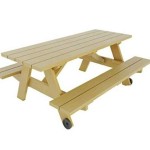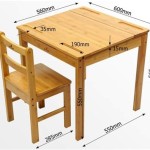How To Set Up a Pool Table: A Comprehensive Guide
Setting up a pool table is a meticulous process requiring patience, precision, and the right tools. A properly leveled and assembled table ensures a fair and enjoyable game. This article provides a detailed guide to installing a pool table, covering everything from site preparation to the final cloth stretching.
Prior to initiating the assembly, a thorough assessment of the designated space is crucial. This encompasses evaluating the room dimensions relative to the pool table size, ensuring adequate clearance for players to comfortably maneuver around the table with cues, and verifying that the flooring is sufficiently sturdy and level to support the table’s significant weight. Neglecting this preliminary stage can result in spatial constraints, uneven playing surfaces, and potential structural issues in the long term.
The typical pool table requires a space that allows for a minimum of 5 feet of clear space around all sides of the table. For a standard 7-foot table, this would translate to a room at least 17 feet long and 13 feet wide. For an 8-foot table, the required space increases to approximately 18 feet by 14 feet. These measurements are intended as guidelines; the actual space needed might vary depending on individual playing styles and cue lengths.
In addition to spatial concerns, the floor's levelness is paramount. Even slight undulations in the flooring can significantly impact ball roll, thereby compromising the gameplay experience. A carpenter's level should be employed to identify any inconsistencies. If substantial discrepancies are detected, self-leveling compounds can be used to create an even surface prior to the installation of the pool table. The stable and level foundation is non-negotiable for providing a true and reliable game.
Unpacking and Inventorying the Components
Upon delivery, the pool table components should be carefully unpacked and inventoried against the manufacturer's packing list. This meticulous step ensures that all necessary parts are present and undamaged prior to the assembly process. Common components include the slate bed (usually in one to three pieces), the frame (typically consisting of side and end rails), the legs, the cloth (for the bed and rails), pockets, hardware (bolts, screws, staples), and any included accessories. Any discrepancies or damages should be reported to the supplier immediately to avoid delays or complications later on.
Particular attention should be paid to the slate, as it is the most vulnerable component during shipping and handling. The edges and corners of the slate are particularly susceptible to chipping or cracking. Inspect the slate for any visible damage before proceeding. The slate's flatness should also be checked with a straightedge. If any significant warping or damage is evident, the slate should be replaced before further assembly.
Similarly, the wooden components of the frame and legs should be inspected for any signs of dents, scratches, or structural damage. Minor cosmetic imperfections can often be touched up, but any damage that compromises the structural integrity of the frame or legs must be addressed before assembly. Ensure all hardware is present and accounted for. Having the correct hardware readily available will streamline the assembly process and prevent frustration.
Assembling the Frame and Attaching the Legs
The pool table frame serves as the structural foundation for the entire table. Assembly typically involves connecting the side and end rails using bolts and corner brackets. The joints should be tightened securely to ensure a rigid and stable frame. It is important to follow the manufacturer's instructions closely, as the assembly sequence may vary depending on the table's design.
After the frame is assembled, the legs are attached. Most pool table legs are attached to the frame using bolts and threaded inserts or mounting plates. The bolts should be tightened evenly to distribute the weight of the table uniformly across all the legs. Care should be taken not to overtighten the bolts, as this could damage the frame or leg attachments. Once the legs are attached, the frame should be carefully flipped over and placed in its final location within the designated space.
Once the table is upright and in its approximate final location, the leveling process begins. Minor adjustments can be made by using shims under the legs. The goal is to achieve a perfectly level playing surface. A high-quality carpenter's level is essential for this step. The level should be placed across the slate in multiple directions (lengthwise, widthwise, and diagonally) to identify any high or low spots. Shims should be added under the legs as needed until the bubble in the level indicates a perfectly level surface. This process requires patience and precision, as even slight variations in levelness can affect the ball's roll.
Installing the Slate Bed and Leveling
The slate bed provides the smooth, even playing surface required for a proper game of pool. The slate is usually delivered in one to three pieces, depending on the size and quality of the table. If the slate is in multiple pieces, it must be joined together seamlessly to create a single, flat surface. This process requires careful alignment and the use of seam filler to eliminate any gaps or imperfections.
Prior to fastening the slate to the frame, it must be carefully aligned. Ensure that the slate overhangs the frame equally on all sides. This ensures that the cloth can be properly wrapped and stapled. Once the slate is aligned, it is typically fastened to the frame using screws. The screws should be tightened carefully to avoid cracking the slate. The manufacturer's instructions will specify the correct screw size and tightening torque.
After the slate is fastened, it is crucial to re-level the table. The weight of the slate can cause the frame to shift slightly, so minor adjustments may be needed. Use the carpenter's level to check the levelness of the slate in multiple directions and add shims under the legs as needed to achieve a perfectly level surface. This step is critical for ensuring consistent ball roll and a fair game.
Stretching and Securing the Cloth
The cloth is the final layer of the playing surface and is essential for providing the smooth, fast ball roll that characterizes a good pool table. Installing the cloth requires specialized tools and techniques to ensure a tight, wrinkle-free finish. The cloth is typically attached to the slate using staples or adhesive.
Before stretching the cloth, it is essential to ensure the slate surface is clean and free of any debris. Any imperfections on the slate surface will be visible through the cloth and can affect the ball's roll. Use a vacuum cleaner and a damp cloth to thoroughly clean the slate before proceeding.
The cloth should be stretched tightly and evenly across the slate before being secured. Special cloth stretching tools are available to aid in this process. Start by securing the cloth at one end of the table and then stretch it tightly to the opposite end before securing it. Repeat this process for the sides of the table. The cloth should be stretched tight enough to eliminate any wrinkles or sags, but not so tight that it distorts the slate or tears the cloth.
Once the cloth is stretched, it is secured to the underside of the slate using staples or adhesive. Staples should be placed close together to ensure a secure hold. Adhesive should be applied evenly and allowed to dry completely before playing on the table. After the cloth is secured, any excess material can be trimmed away using a sharp knife or razor blade.
The rail cloths require precision. Typically, these cloth pieces are pre-cut. They must be stretched and adhered carefully to the rail surfaces, ensuring no creases or loose sections. The pockets are installed after the rail cloths are secured, completing the playing surface assembly.

How To Rack A Pool Table 10 Steps With S Wikihow

How To Rack A Pool Table

How To Rack Up Pool And Snooker Hamilton Billiards Blog

Eight Ball Wikipedia

How To Rack In 8 Ball 10 Steps With S Wikihow Pool Table Balls

How To Rack Up Balls Set A Pool Or Snooker Table Liberty

How To Rack In 8 Ball Professionally 6 Steps For Setup

How To Setup A Snooker Table

Rack Em Up The Correct Way To Set Pool Balls Coach

Hall Of 66 In Apex Billiard Table With Ball And Cue Stick Set Bl066y22009 The Home Depot








